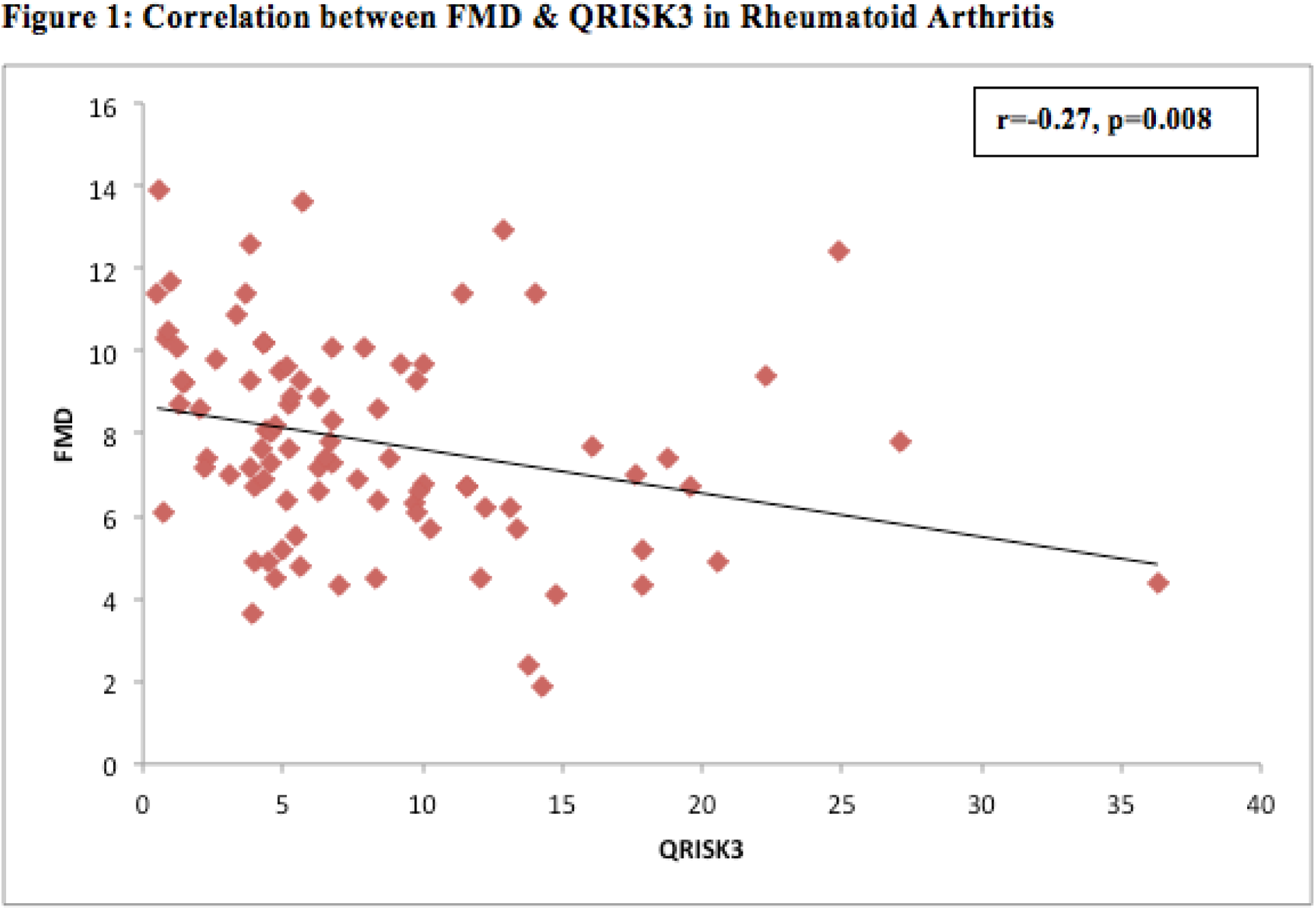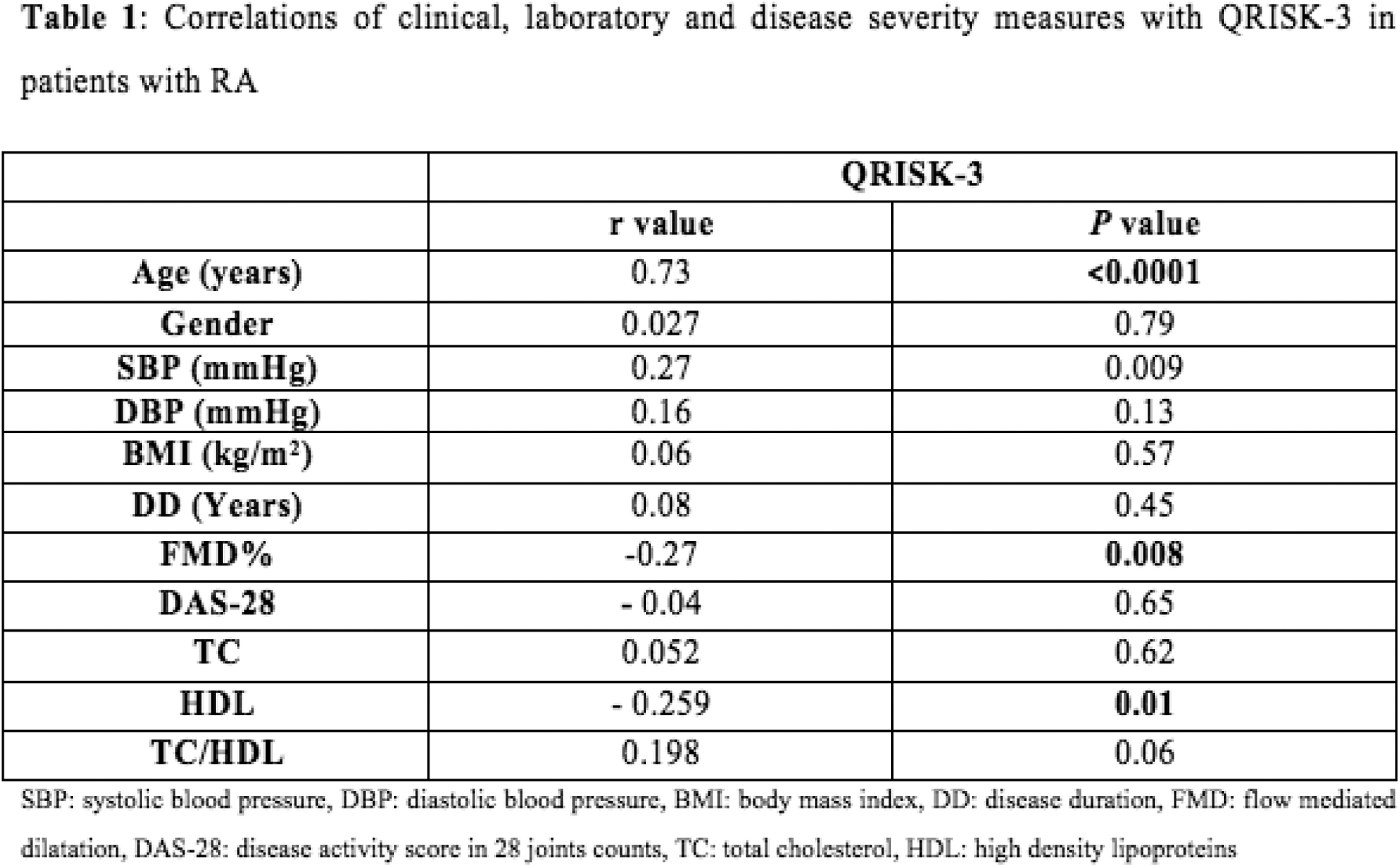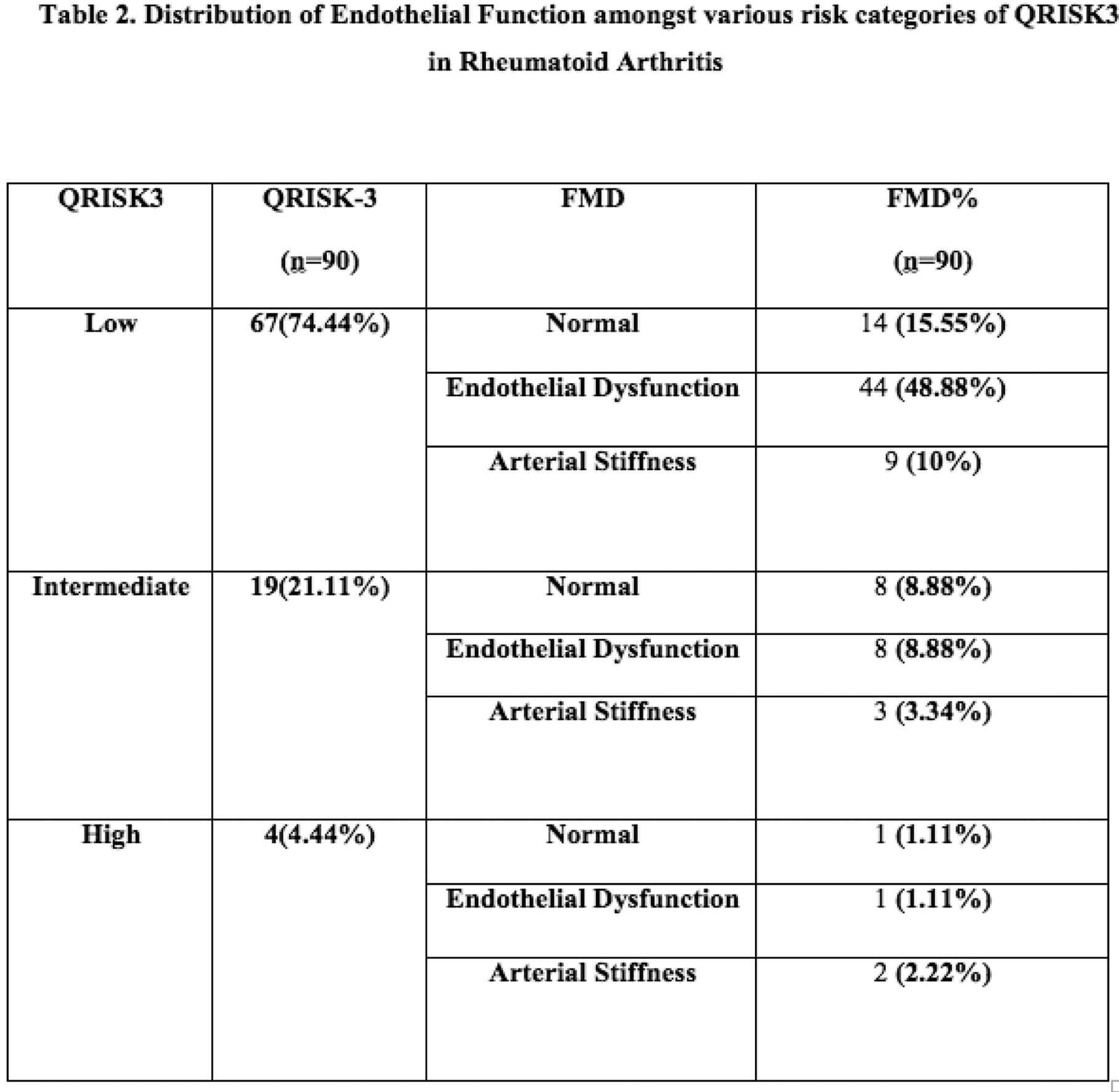

Background: Cardiovascular disease continues to be the leading cause of morbidity and mortality in rheumatoid arthritis (RA) [1] . Endothelial function is considered the barometer of cardiovascular health while QRISK3 [2] is a new risk assessment tool that includes RA-related risk factors to estimate the 10-year risk of cardiovascular disease. However, the relationship between endothelial function and QRISK3 in rheumatoid arthritis remains unexplored.
Objectives: The present study is designed to elucidate the interplay between endothelial function and the 10-year risk of cardiovascular disease in RA.
Methods: 90 consecutive RA patients (78 females, 12 males; mean age: 55 ± 9.7 years; range: 37 to 75 years) meeting ACR/EULAR 2010 Rheumatoid Arthritis classification criteria on disease modifying anti-rheumatic drugs were enrolled. Endothelial function was assessed using flow-mediated dilation (FMD) using AngioDefender. QRISK3 scores were calculated based on established algorithms using demographic, clinical, and laboratory data. Risk factors considered included: age, ethnicity, deprivation, systolic BP, BMI, total cholesterol:HDL ratio, smoking family history of coronary artery disease in a first degree relative less than 60 years, diabetes, treated hypertension, RA, atrial fibrillation, CKD (stage 3,4 or 5), a measure of SBP variability, migraine, corticosteroids, atypical antipsychotics, severe mental illness and HIV/AIDS. In the present study, QRISK3 classified patients with score <10 as low risk 9 (n=67), 10-20% as intermediate risk (n=19) and >20% are considered as high risk (n=4). Statistical analysis was performed using Graph Pad prism3 software. Correlation coefficients were calculated to assess the strength and direction of the correlation between FMD and QRISK3 scores.
Results: Of the 90 recruited RA patients: 74.44% had low, 21.11% had intermediate and 4.44% had high QRISK3 score. Of the patients with low (74.44%) QRISK3 score, 15.55% had normal FMD, 48.88% had endothelial dysfunction and 10% had arterial stiffness on FMD. Of the patients with intermediate (21.11%) QRISK3 score, 8.88% had normal FMD, 8.88% had endothelial dysfunction and 3.34% had arterial stiffness on FMD. Of the patients with high (4.44%) QRISK3 score, 1.11% had normal FMD, 1.11% had endothelial dysfunction and 2.22% had arterial stiffness on FMD. A significant inverse correlation was observed between FMD and QRISK3 scores (r = -0.27, p < 0.008), indicating that impaired endothelial function was associated with higher 10-year cardiovascular risk (Figure 1).
Conclusion: The correlation between FMD and QRISK3 in patients with RA will help us to understand the relationship between endothelial dysfunction and 10-year cardiovascular risk prediction. Further exploration of these correlations may refine risk stratification and guide targeted interventions for improved cardiovascular outcomes in RA patients.
REFERENCES: [1] Jagpal A, Navarro-Millan I. Cardiovascular co-morbidity in patients with rheumatoid arthritis: a narrative review of risk factors, cardiovascular risk assessment and treatment. BMC Rheumatol. 2018; 2:10.
[2] Cox JH, Coupland C, Brindle P. Development and validation of QRISK3 risk prediction algorithms to estimate future risk of cardiovascular disease: prospective cohort study. BMJ 2017; 357:j2099



Acknowledgements: NIL.
Disclosure of Interests: None declared.